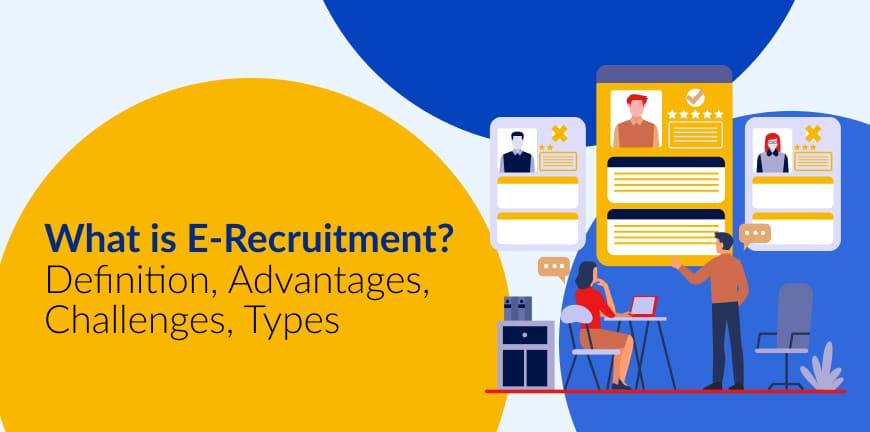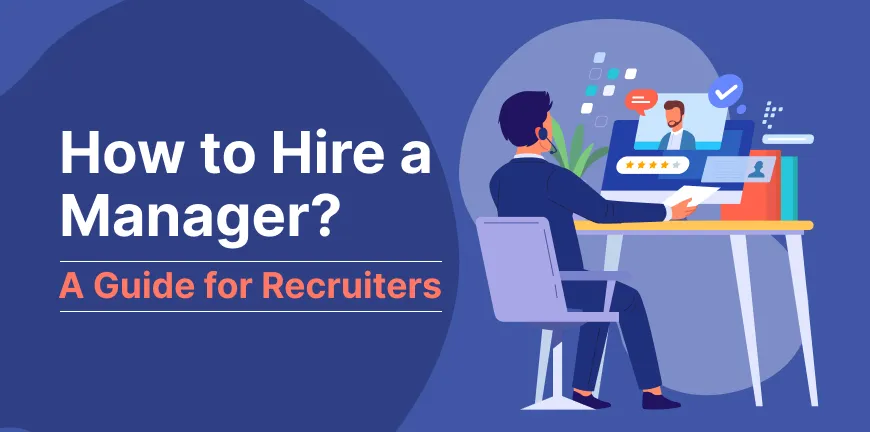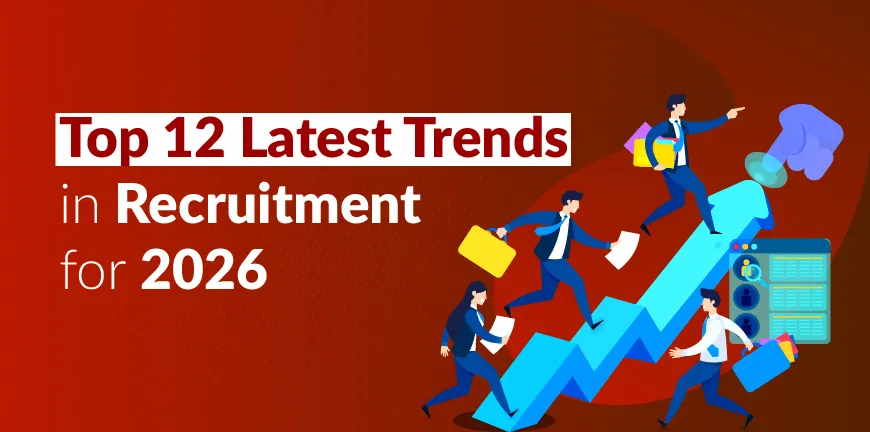
What Is the Global Talent Shortage? Causes, Impact & Solutions
25/08/2025
Ethical AI in Recruitment: Fairness, Diversity & Transparency
26/08/2025- What does Recruitment mean in HR?
- What does Hiring mean in HR?
- How Is Recruitment Different from Hiring?
- What Is the Recruitment Process vs the Hiring Process?
- What Is the Difference Between Recruitment, Selection, and Hiring?
- How Do Recruitment and Hiring Align with Workforce Planning?
- Why Is Recruitment a Long-Term Strategy and Hiring a Short-Term Action?
- How Does Recruitment Strengthen Employer Branding?
- How Does Hiring Address Immediate Business Needs?
- What Are the Common Challenges in Recruitment vs Hiring?
- When Should Businesses Prioritize Recruitment vs Hiring?
- What Tools and Technologies Support Recruitment vs Hiring?
- How Do Different Industries Approach Recruitment vs Hiring?
- What Are the Best Practices for Balancing Recruitment and Hiring?
- Frequently Asked Questions (FAQs)
Employees run an organisation. Hiring or recruiting people at the right time is crucial for a business’s success. But why do we say hiring or recruiting? Aren’t they the same? Not particularly. While they are similar, their definition and purposes are different. Knowing which to use at what point in an organisation can be crucial for the company’s growth. In this blog, we’ll explore recruiting vs hiring to understand its nature, purpose, and use.
What does Recruitment mean in HR?
Recruitment in HR means identifying, sourcing, screening, interviewing, selecting, hiring, and onboarding employees for available and suitable positions. Candidates are sourced from outside or internally from existing employees with the skills, experience, and desire to fill the open position. The focus here is to fill critical full-time positions.
What does Hiring mean in HR?
Hiring in HR means reviewing applications, selecting candidates, interviewing them, and choosing the best one based on the various employment tests and checks. It is a critical function of Human Resources (HR) that involves activities like screening, interviewing, and extending job offers. It focuses on filling immediate vacancies.
How Is Recruitment Different from Hiring?
Recruitment is a strategy to hire individuals long-term for critical full-time positions in an organisation. Recruitment helps build a strong talent pipeline even when no demand exists. Recruitment involves consistent engagement that strengthens employer brand visibility. Over time, it also reduces cost-per-hire as it reduces the reliance on job boards. Recruitment isn’t a one-time thing; it’s a consistent effort from the HR and the organisation to improve brand visibility and build a skilled, long-term workforce.
Hiring focuses on filling contract or short-term positions in an organisation on an immediate, on-demand basis. Hiring is ideal for companies looking to fill positions quickly. These positions require candidates’ skills only for a small period, so candidates with entry-level or specific experience can be hired. The process involves less effort and can benefit companies looking to hire during seasonal workloads or for particular projects. But rushing it can lead to bad decisions and higher turnover rates.
What Is the Recruitment Process vs the Hiring Process?
1. Duration of the process
The recruitment process is longer as it’s an ongoing process that focuses on building a talent pipeline and filling full-time positions.
The hiring process is shorter, and it involves filling short-term positions. And once the position is filled, the process halts.
2. Proactive and reactive processes
Recruitment is a proactive approach to meaning the process happens even when no immediate vacant positions exist. It’s more about building talent pools and nurturing relationships.
Hiring is reactive; it is a process set in motion only when a vacant position needs to be filled immediately.
3. Talent Source
Recruitment does not target only active candidates but also targets passive candidates who are right for the organisation but are not actively applying yet.
Hiring involves targeting individuals who actively apply for jobs and seek work.
4. Candidate experience
The recruitment process provides a better candidate experience as it helps form a relationship with candidates as they are recruited for full-time positions.
The hiring process doesn’t leave a lot of scope for providing great candidate experiences, as it is a process that is engaged only to fill an urgent, vacant position.
What Is the Difference Between Recruitment, Selection, and Hiring?
Recruitment, Selection, and hiring are all interconnected in the employment cycle but serve different purposes.
| Recruitment | Selection | Hiring | |
| Definition | Target suitable candidates, introduce the open role | The list of candidates is analysed through assessment and tests | Target active job seekers to fill the vacant position immediately |
| Aim | Attract a large pool of candidates with skills and qualifications suitable for critical positions. | Filter candidates from the potential candidate list after a thorough assessment of skills. | Source a list of active job seekers, screen and interview them to find the best person for the open position. |
| Process | A job description is posted on job sites, social media, etc, to attract potential candidates. | Candidates go through assessments, background checks before selecting the best one. | A vast candidate database is tapped, and professional networks are searched for the most relevant profiles. |
| Nature | It’s an ongoing process and can save costs in the long run | Involves spending resources for various assessments | A one-time fee is paid, and a relevant candidate is hired. |
| Complexity | The critical positions are introduced, but no contract is signed | An agreement is signed between the firm and the selected candidate | Candidates are hired for the vacant positions by signing a contract with them |
How Do Recruitment and Hiring Align with Workforce Planning?
Recruitment and hiring align with workforce planning by ensuring organisations have the correct number of employees with the right skills to help meet their short-term and long-term goals.
1. Workforce Planning
Involves the analysis of the current workforce, predicting future needs, identifying skill gaps, and coming up with solutions to meet all organisational goals. It is a key strategic and operational HR function that links recruitment and hiring of talent with business plans.
2. Alignment
Recruited or hired candidates must have the skills and experience to advance the organisation and help achieve their goals.
3. Cost effectiveness
By understanding the workforce needs better, candidates can be hired or recruited. Going for the right approach can help save recruitment costs or not rushing and risking bad hires.
4. Employee development
Instead of hiring from outside, existing employees can be provided with upskilling opportunities, and recruitment strategies can help place them in the right roles.
Why Is Recruitment a Long-Term Strategy and Hiring a Short-Term Action?
Recruitment is a long-term strategy focusing on building a talent pipeline wherein employees can help meet short-term and long-term organisational goals. Recruitment is also about enhancing employer branding, actively approaching potential candidates to attract them towards the company’s opportunities, whether there are vacancies. In the recruitment process, a likely candidate is recruited regardless of the short-term needs.
Hiring is a short-term action that is more of a reactive approach, wherein either the HR team of an organisation or a staffing provider taps into active job seeker applications, candidate database, or professional networks to quickly hire an individual with relevant skills and experience for an urgent vacant position that needs to be filled. Once these open positions are filled, the hiring process halts.
How Does Recruitment Strengthen Employer Branding?
Since it’s an ongoing process, recruitment automatically puts the employer brand out there, making it more visible. How can it strengthen employer branding?
- Creating an employer value proposition that doesn’t just highlight competitive pay and benefits, but also their interest in investing in the employee’s professional growth
- Highlight how your company is diverse and inclusive and ensure candidates from various backgrounds and experiences are not just encouraged. Still, they are also made to feel welcome in the organisation and have equal opportunities.
- The interaction a candidate has with the brand can either attract them or repulse them. To ensure the candidate has a good experience, companies can offer a personalized touch, keep them in the loop, and constantly communicate with them. This can increase the chances of them accepting the job offer.
How Does Hiring Address Immediate Business Needs?
Immediate Business Needs are effectively addressed through hiring by helping organisations swiftly acquire candidates for their vacant positions.
Some of the instances where hiring is a lifesaver
- Expansion of the company
- Seasonal demand due to an increase in sales
- When employees leave without notice, and you require someone skilled enough to replace them immediately for continued operations
- If there are projects that require specific skills but aren’t present in your current workforce.
- Hiring employees with skills that are required for new roles that are more technology oriented.
Hiring is invoked by posting jobs on various channels, streamlining interviews and candidate assessments, and hiring individuals for temporary roles.
What Are the Common Challenges in Recruitment vs Hiring?
Both recruitment and hiring present distinct challenges.
Recruitment Challenges
- Attracting and engaging potential, qualified candidates and not letting them slip or lose interest, especially in this competitive market
- Having the proper employer branding that speaks to potential candidates
- Ensuring that the candidate has a good experience during the entire recruitment process
Hiring Challenges
- Selecting the right candidates from a vast talent pool after proper evaluation of skills and qualifications
- Making sure there is no unconscious bias while choosing the best one out of the selected candidates.
- Making sure that the hiring efforts are diverse and inclusive by hiring candidates from different backgrounds, races, and experiences.
- Since it’s for short-term positions, there is a higher chance of employees exiting the organization.
When Should Businesses Prioritize Recruitment vs Hiring?
Prioritizing recruitment or hiring solely depends on the needs of a business.
Recruitment must be prioritized when businesses seek to build their organization by acquiring individuals for their crucial positions and want to retain them for a long time. If they have skills that are hard to find, it’s best to recruit them immediately.
Hiring can be prioritized if you want skilled candidates to fill open roles or address skill gaps for specific projects. If you have a sudden spike in sales and need extra hands, then hiring is a great option. Hiring is good if you want an individual quickly for short-term needs.
What Tools and Technologies Support Recruitment vs Hiring?
Some of the top tools and technologies that recruiters and organizations must incorporate or invest in are-
- Job boards
- Premade assessments
- Chatbots
- Interviewing software
- Applicant tracking system
- Candidate relationship management (CRM) software
- Mobile applications
- Augmented writing software
- Social Networks
- Onboarding software
How Do Different Industries Approach Recruitment vs Hiring?
How industries approach recruitment vs hiring depends on their demand for skills, whether they need high technical expertise, and for how much duration, market conditions, especially in high-demand sectors, and the regulatory challenges they face.
For example, the healthcare sectors require a blend of technical expertise and soft skills with adherence to standards. Manufacturing companies put out print ads, tap into employee referrals, and engage with staffing service providers like Alp Consulting that can address recruitment and hiring needs.
What Are the Best Practices for Balancing Recruitment and Hiring?
Some of the best practices for balancing recruitment and hiring include
- Communicating with the hiring manager to understand workforce needs
- Conduct talent gap analysis to figure out the right approach
- Determine key recruiting metrics
- Make sure the employer branding is proper to attract the right candidates
- Tap into active and passive job seekers for current and future needs.
- Have a talent pool to tap into as required.
- Screen candidates to assess their skills and for the right attributes
- Improve candidate experience through enhanced recruitment and hiring processes.
- Venture into social media recruiting, as that’s where everyone is looking
- Automate some workflows with Gen AI
- Build an internal mobility program
- Identify opportunities for upskilling
Frequently Asked Questions (FAQs)
1. What is the difference between recruitment, selection, and hiring?
The difference between the three lies in their processes, the distinct benefits they offer businesses, budget constraints, and more.
2. What comes first, recruitment or hiring?
Recruitment comes first because that’s where identifying and attracting candidates for a company’s job opening starts.
3. Can hiring be done without recruitment?
Hiring can be done without recruitment by promoting or transferring employees from one position or department to another.
4. What is the main difference between hiring and recruitment?
The main difference is that recruitment doesn’t wait for an opening in an organization; it’s an ongoing process, while hiring is only done when a vacancy exists and must be filled immediately.
5. How do companies balance recruitment and hiring?
The two processes are balanced by assessing an organization’s current and future workforce needs.
6. Is recruitment only for permanent employees?
No, it isn’t for permanent employees; temporary and contract-based positions are also recruited depending on the organization’s needs.
7. Is selection part of recruitment or part of hiring?
Recruitment and selection are both famous terms related to the hiring process.
8. How does talent acquisition differ from recruitment and hiring?
Talent acquisition predicts the future workforce needs of a company by assessing the current workforce, skills, roles to be added, etc, while recruitment and hiring fulfill instant staffing needs.
9. How do recruitment and hiring affect time-to-hire and quality-of-hire?
Efficient recruitment reduces time-to-hire, preventing top candidates from joining competitors and improving candidate experience, while hiring boosts quality-of-hire by ensuring new employees contribute to business goals, increasing retention, and fostering a high-performing work environment.
10. How does employer branding influence recruitment vs hire?
Employer branding plays a vital role in deciding the quality of candidates attracted during recruitment and retention of candidates post the hiring process.
11. How do compliance requirements differ between recruitment and hiring?
In recruitment, compliance is about creating a diverse pool of candidates, ensuring fair opportunities, and proper, non-biased screening. In hiring, compliance focuses on specific candidate qualifications, background checks, and job offer terms regarding employment regulations.
12. Can recruitment be automated without hurting candidate experience?
Automating only those tasks that don’t require extensive human involvement must be automated, not to hurting the candidate experience.
13. What tools are best for recruitment vs what tools are best for hiring?
Job boards, social media, and CRM are best for recruitment, while ATS, video interviewing, and pre-employment software are best for hiring.
14. How do startups handle recruitment vs hiring differently from enterprises?
Startups use recruitment and hiring models as per their growing or scaled-down business needs, as well as their budget constraints, as opposed to enterprises, where there is a constant need for both models.
15. Do high-volume or seasonal roles change recruitment vs hiring?
High volume or seasonal roles impact recruitment vs hiring about speed, efficiency, and difficult-to-find skills, and involve bulk processing, higher rates of candidate exiting, and tools like ATS.
16. How do internal mobility and referrals fit into recruitment vs hiring?
The two are lifesavers, especially in current market conditions with massive demand for talent. They help fill roles internally.
17. What are the common mistakes companies make in recruitment vs hiring?
Common mistakes companies make are not assessing their current and future workforce needs properly, leading to over hiring, under hiring, or bad hires, being unsure about the resources they want to spend, and choosing a staffing and recruitment provider that does not provide the required services.
Contact Us For Business Enquiry

Amit Saproo
Amit Saproo is the Head of Operations at ALP Consulting with nearly 17 years of experience in Executive Search, RPO, Leadership, and IT & Engineering recruitment. He leads nationwide recruitment programs across Technology, BFSI, and R&D domains, driving strategic hiring solutions for diverse client needs. Amit excels in building and managing high-performance teams that deliver scalable, end-to-end recruitment and consulting services.




